Crosley Icyball Refrigerator 1929. Restored (RARE)
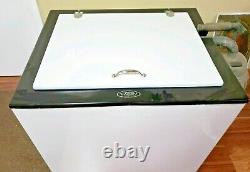
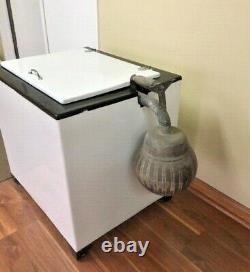
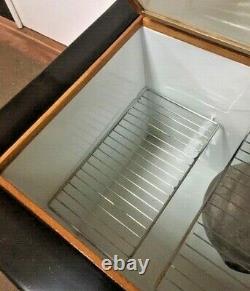
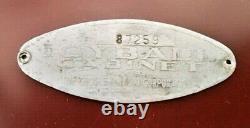
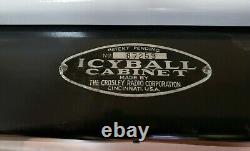
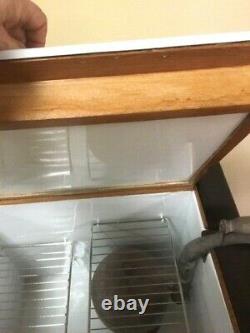
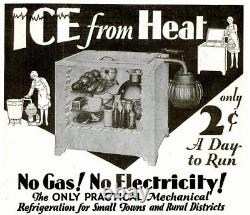
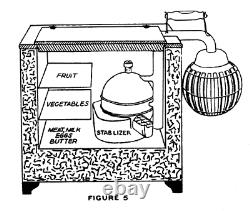
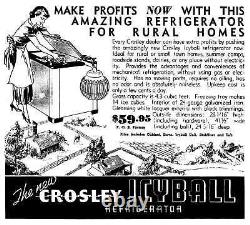
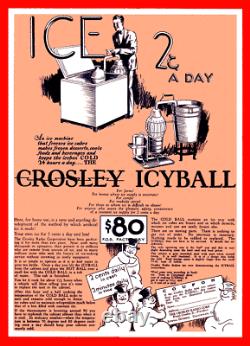

For sale at a very modest price is this extremely Rare Crosley IcyBall from 1928. This is for the collector who likes rare Americana items. The Smithsonian Institute has a non restored one. Once in awhile you might see one of these incomplete or one that is really beat up.
This is probably the finest known example. FOB is Rialto, California, 50 miles east of Los Angeles in the Inland Empire area of Southern California. I can also give you the name of a carrier I've used for over 10 years who specializes in moving antiques and higher end collectables. IcyBall Advertising Graphic, Popular Mechanics, August 1930, p. For homes where ice supply is uncertain! For anyone who wants the pleasure, safety, convenience of a constant ice supply for 2 cents a day. Advertisement, Farm Mechanics, September 1928[2]. In the early 1900s, methods of keeping food cool in the hot summers of the U. In 1927, the same year the General Electric Monitor-Top Refrigerator was making home refrigeration more popular in electrified cities and towns, the Crosley Radio Corporation introduced a non-electric home refrigeration option powered by the heat of a stove burner: The Crosley IcyBall. The IcyBall was marketed well into the 1930s to homes and businesses with limited access to electricity or ice. It required no electricity and operated silently with no motor or moving parts. The user was required to charge the systemusually dailyby lifting the 35-pound double-ball unit to heat the hot ball over a gentle heat source (generally a burner fueled by kerosene) while the cold ball (or ice ball) side hung immersed in a tall tub of water. The heating process usually took about one-and-a-half hours. IcyBall Heating Setup Figure from Owners Manual. Note the low laundry-type stove burner. Other sources suggest a camp-type stove burner. Kerosene was often the fuel of choice. Figure 2 from Public Domain Owners Manual, digitized and presented courtesy of Crosley Auto Clubs IcyBall Pages.IcyBall Refrigerator Figure with Depiction of Optional Stabilizer (Owners Manual Figure 5, Public Domain Image Courtesy of Crosley Automobile Club IcyBall Pages). Crosley IcyBall Refrigerator on Display at the Central Kansas Flywheels Yesteryear Museum, Salina, Kansas (Photo by PrairieYesteryear. When fully charged, a built-in whistle sounded. The user lifted the IcyBall unit from the burner and dunked the hot side into the water tub to accelerate the cooling process before returning the unit to its position straddling the side of the refrigerator chest.
The ice-ball contained a cylindrical sleeve-like passage through the ice ball which provided frozen temperatures sufficient to make ice cream or ice in the provided tray. A 1929 IcyBall advertisement in Country Gentleman magazine quotes Kansas farmer Carl Moyer on some advantages opened to the rural user by such an appliance. Besides we make one trip to the creamery instead of two as before. Then we have ice for the table and ice cream whenever we want it. Believe me, we like our Icyball. IcyBall also advertised in Farm Mechanics, Popular Mechanics, [1] and was promoted in Scientific Americans September 1929 issue. [7] Crosleys network of radio dealers were encouraged to push the IcyBall. Ad Encouraging Crosley Dealers to Promote the IcyBall for Rural Homes and Businesses (April 1935, Crosley Broadcaster , Public Domain Image Courtesy of Crosley Automobile Club IcyBall Ads Page). Crosley applied this same principle of affordability to kitchen appliances. Following its IcyBall success, Crosley introduced electric refrigerators in 1931, and in 1933, the Shelvador, the first refrigerator with recessed storage space built into the door. The IcyBall is an absorption cooling system, a technique still used in propane R. Refrigerators and modern kerosene refrigerators. Todays absorption refrigerators contain more controls or additional technologies to eliminate the need for periodic manual attention to recharge (reheat) the system. The 2 ball unit ready for recharging contains a solution of ammonia in water in the hot-ball side. The heating step causes ammonia (which has a lower evaporation point than water) to vaporize from an ammonia-water solution in the hot ball and to travel in gaseous form through the U-shaped connecting tube to the cold ball, where it condenses in the high-pressure (around 250 psi) caused by the heating process. After charging, as the whole system cools, the pressure reduces, allowing some liquid ammonia on in the cold ball to evaporate, making its way in gaseous form back to the hot ball side, where it is reabsorbed into solution with the water until the next heating process. The process of evaporation in the cold ball pulls heat from the outer environment surrounding the cold ball, causing it to ice.As ammonia gas is absorbed, pressure lowers further and allows more liquid ammonia to evaporate. This gradual process continues to pull heat from the insulated chest, keeping it cool, until the ammonia has mostly recombined with the water. At that point, it is time for recharging. IcyBall offered an optional stabilizer base filled with glycerin or other odorless radiator antifreeze solution. This provided a more stable temperature, particularly during the hour and a half when the IcyBall unit was removed for recharging.
The item "Crosley Icyball Refrigerator 1929. Restored (RARE)" is in sale since Monday, January 4, 2021. This item is in the category "Collectibles\Banks, Registers & Vending\Vending Machines\Soda".
The seller is "nostalgiatymes" and is located in Rialto, California. This item can't be shipped, the buyer must pick up the item.- Modified Item: No
- Country/Region of Manufacture: United States
- Original/Reproduction: Original

